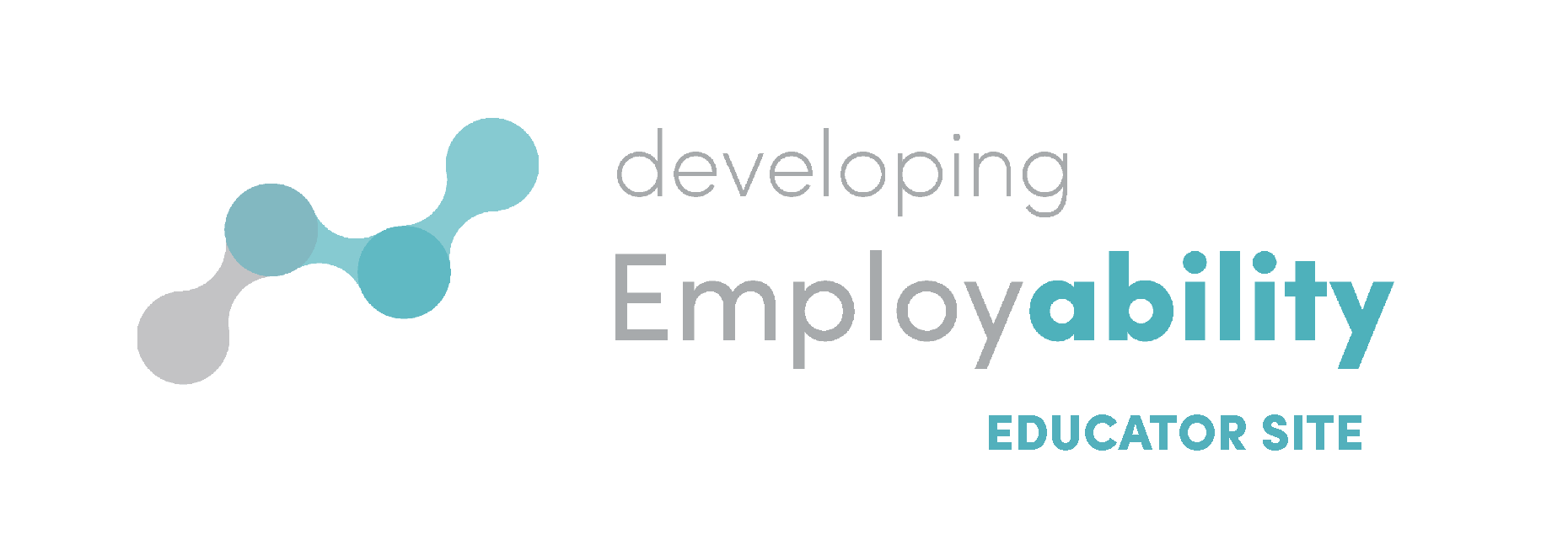Home › Forums › Expert in Residence Forum › Topic 02 | How can we create change with a collaborative governance framework?
Tagged: assessment, employability, governance, WIL, work integrated learning
- This topic has 7 replies, 4 voices, and was last updated 6 years, 9 months ago by
 Dawn Bennett.
Dawn Bennett.
-
AuthorPosts
-
-
June 9, 2017 at 6:50 am #1662
 Amanda HendersonParticipant
Amanda HendersonParticipantHi, I am Amanda Henderson and I will be leading the discussion for the month of June. My particular interest is work integrated learning given my experience of working across industry and the academic sector over the last 20 years.
I have recently managed to ‘coalesce’ the many facets of work integrated learning that I have been involved through the development of a collaborative governance framework. This framework is published in the Asia-Pacific Journal of Co-operative Education is readily available on address – http://www.apjce.org/files/APJCE_18_1_73_86.pdf
The abstract outlines the links between work integrated learning, graduate capability, and employability. Graduate capability and employability are regarded as critical success factors for degree programs by universities, industry, and the students. Furthering work-based experiences for academic credit within degree programs is being increasingly explored to assist employability. Effective work based experiences are reliant on good partnerships between university, industry and student. Such successful relationships assist communication and understanding important for meaningful, quality work based learning experiences and assessments. Collaborative governance is a finely nuanced arrangement that is dependent on commitment, shared understanding and building trust across university, industry and student guided by the student learning outcomes. Collaborative governance is presented in this paper as an effective framework to guide and organize the structures and processes of university, industry and student to facilitate work based learning that supports student capability through the attainment of desired outcomes.
While the paper outlines a framework that can inform standards that education institutions and industries may adopt there is also a strong prevailing them of communication, collaboration and trust that is needed. These elements are more difficult to ‘script’ in any standards.
I would be interested in hearing experiences of this development of goodwill and trust that I feel is fundamental to optimum learning for students to work placements.-
This topic was modified 6 years, 10 months ago by
 Developing Employability.
Developing Employability.
-
This topic was modified 6 years, 10 months ago by
 Developing Employability.
Developing Employability.
-
This topic was modified 6 years, 10 months ago by
 Developing Employability.
Developing Employability.
-
This topic was modified 6 years, 10 months ago by
 Developing Employability.
Developing Employability.
-
This topic was modified 6 years, 10 months ago by
 Developing Employability.
Developing Employability.
-
This topic was modified 6 years, 10 months ago by
-
June 16, 2017 at 2:56 am #1672
 Dawn BennettKeymaster
Dawn BennettKeymasterThanks Amanda, I just re-read the paper and would like to raise three key points for discussion and comment – it would be great to bring together the expertise on these.
First, a collaborative governance framework is truly collaborative! Students are the essential element and they need to be included from the start. Alongside this come shared values and purpose as well as a shared understanding about what employability is. My question is, how we come to this shared understanding? Does anyone have examples of where this is already in place?
The next point links back to students as partners. Engaging all students is always a challenge. This is where assessment comes in, particularly using David Boud’s emphasis on assessment that credits both higher-order thinking and situated, ‘doing’ activities. I would love to see examples of best practice so that we might be able to roll these out more broadly.
The third point is that work-based learning, which Amanda and Francesca define as for-credit learning and teaching strategies that occur in real-world contexts and are properly supervised, need to be written into institutional processes and structures. For this to be effective, simplistic understandings of WIL need to be overcome. How we create better understandings of WIL and employability, particularly when the government takes a simplistic view? are there examples we could all follow?
-
June 19, 2017 at 2:29 am #1674
 Amanda HendersonParticipant
Amanda HendersonParticipantThanks Dawn. I shall start with the first question. How do we come to a shared understanding about what employability is. Employability, similar to work integrated learning, is broad in its meaning and can be understood in many different ways. Understanding of learning, and employability, are journeys that we need to assist students travel. Both the university and industry have important roles in assisting student journeys in their path of understanding. Shared understanding as an absolute state is possibly elusive, rather shared understanding maybe seen to be achieved if there is mutual acceptance that employability is continually emerging and developing for any individual.
Curriculum is important in shaping student behaviours, in particular, behaviours that encourage students to take ownership of their learning that contributes to employability. At the University of the Sunshine Coast in Queensland, the School of Nursing is implementing a process called ‘Check In/ Check Out’ (CICO).
The Fact Sheet that students receive explains that “The Check-in and Check-out (CICO) process supports high quality, engaging and relevant education in clinical practice spaces. The CICO process focuses on collaborative learning spaces where students engage as partners in their learning with teaching staff in nursing laboratories, simulation suites and clinical practicum. The CICO elements complement the course content, skills assessed, and clinical practice within all clinical courses. The expectations of teaching staff and students in collaborative learning spaces is informed by the USC Student Charter. The course co-ordinator and teaching staff are responsible for all aspects of a clinical course delivery. Students are expected to actively engage with the course requirements and learning resources to successfully complete a clinical course. In a collaborative learning space students are active partners with teaching staff in clinical learning activities.” The Amanda Henderson at the University of Sunshine Coast initiated and currently leads the implementation of this approach. The approach is successful in engaging students as partners which you have mentioned in your next point. -
June 20, 2017 at 2:19 am #1680
 Dawn BennettKeymaster
Dawn BennettKeymasterHi Amanda, is there anything on the CICO approach that we could see or read about? Do you think that we could share the fact sheet, for example? It would be really helpful to think about whether this could be integrated into an existing curriculum / unit – might it work (to a lesser extent) just in one unit of study?
At USC, has there been any opposition bv students? If so, how has it been managed?
-
July 4, 2017 at 1:04 am #1739
 Hans TilstraMember
Hans TilstraMemberOne of the more prominent themes in this year’s HERDSA conference was the ‘students as partners’ idea. And in that context it occurred to me that our program designs rarely create the kind of collaborative spaces and buddy systems we need more of. One example I’d like to promote is a strand such as this one: http://edps.engineering.queensu.ca/About-the-EDPS.html . Here, trust and goodwill are enabled as students know that their first year experience is but the beginning of a relationship they will have with industry and one another. This is in sharp contrast to the prevalent program design in which each course seems to be an island. One of the ways to make the stranding work is to draw on the CDIO’s levels:
1st year: To have experienced or been exposed to, to be able to participate in and contribute to
2nd year: To be able to understand and explain
final year: To be skilled in the practice or implementation of, to be able to lead or innovate in -
July 5, 2017 at 2:31 am #1740
Amanda Henderson
ParticipantHi Amanda and Dawn
This is a great topic for discussion. Over the last 18 months we have been working on a process to engage nursing students as partners in their learning in collaborative learning spaces (already discussed by Amanda in the forum). This has focused on clinical learning spaces across clinical laboratories, simulation suites and work integrated learning (clinical practicum). The Check-In Check-Out (CICO) process has allowed us to provide consistency across the learning spaces; we have had a clear focus on thinking about how a consistent process could be used across the learning spaces to support both students and teaching staff. The CICO process is being used in the BNSc preparation for practice and practice courses. The CICO is linked to assessment and the CICO elements are integrated into the students’ ePortfolio. This work is being implemented using a program approach and course teams are working together to ensure that teaching and learning is aligned to the program outcomes. Our initial CICO pilot evaluation was positive; the roll out of the process is continuing to be evaluated.
We look forward to discussing any questions about our experience; I would be happy to send our CICO Factsheet to anyone interested in the initiative. (I wasn’t able to upload the Factsheet as an attachment?)
Kind regards, Amanda (USC) -
July 13, 2017 at 4:20 am #1766
 Dawn BennettKeymaster
Dawn BennettKeymasterI love these examples! Colleague Nicoleta Maynard was over at Queens last year and brought back so many ideas. Although we have a similar program in 1st year, the challenge is to keep this going throughout the program.
Amanda, how did you get staff on board for program-wide implementation – did you need to formalise the changes, and to address accreditation needs at the same time?
-
July 13, 2017 at 4:20 am #1767
 Dawn BennettKeymaster
Dawn BennettKeymasterI love these examples! Colleague Nicoleta Maynard was over at Queens last year and brought back so many ideas. Although we have a similar program in 1st year, the challenge is to keep this going throughout the program.
Amanda, how did you get staff on board for program-wide implementation – did you need to formalise the changes, and to address accreditation needs at the same time?
-
-
AuthorPosts
- You must be logged in to reply to this topic.
